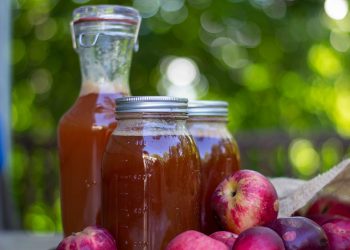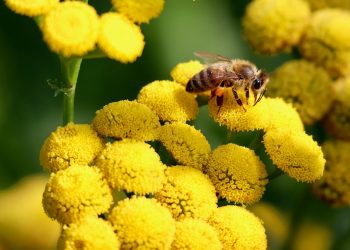Have you ever felt that nagging pain in your joints, making even simple tasks feel like a Herculean effort? You’re not alone. Many people struggle with joint discomfort, whether it’s from arthritis, injury, or just plain wear and tear. While over-the-counter medications can offer relief, they often come with side effects that can be less than pleasant. Enter neem leaves—a powerhouse of natural remedies that can help ease joint pain without the chemical baggage. Let’s dive into five effective ways to use neem leaves for joint relief.
Contents
Introduction to Neem Leaves
Neem, often referred to as the “village pharmacy,” has been used in traditional medicine for centuries, particularly in Ayurvedic practices. This tree is native to India and boasts a myriad of health benefits, thanks to its anti-inflammatory, analgesic, and antioxidant properties. But how exactly can neem leaves help with joint pain? Let’s explore.
1. Neem Leaf Tea
How It Works
Drinking neem leaf tea is one of the simplest ways to harness its benefits. The leaves are rich in compounds like azadirachtin, which have been shown to have anti-inflammatory properties.
Preparation
- Ingredients: A handful of fresh neem leaves or 1-2 teaspoons of dried neem leaves, water, honey (optional).
- Steps:
- Boil about 2 cups of water.
- Add the neem leaves and let it simmer for about 10-15 minutes.
- Strain the leaves and add honey for taste, if desired.
Pros and Cons
- Pros: Easy to make, promotes overall health, and can help reduce inflammation.
- Cons: The taste can be quite bitter, and excessive consumption may lead to digestive issues.
Personal Touch
I remember the first time I tried neem tea; I was bracing myself for something awful. Surprisingly, the bitterness faded a bit with honey, and after a few days, I noticed my joints felt less stiff. It’s worth a shot!
2. Neem Oil Massage
How It Works
Neem oil is extracted from the seeds and leaves of the neem tree and is known for its analgesic properties. Massaging it into painful joints can provide localized relief.
Application
- Ingredients: Pure neem oil, a carrier oil (like coconut or olive oil).
- Steps:
- Mix a few drops of neem oil with a carrier oil.
- Gently massage the mixture into the affected joints for 10-15 minutes.
Pros and Cons
- Pros: Direct application can provide quick relief and improve circulation.
- Cons: Some people may experience skin irritation, so a patch test is advisable.
Anecdote
I once had a friend swear by neem oil for her knee pain. After a week of regular massages, she reported feeling a significant difference. Sometimes, the simplest remedies can be the most effective.
3. Neem Leaf Poultice
How It Works
A poultice is a soft, moist mass of material applied to the body to relieve soreness and inflammation. Neem leaves can be used in this way to target specific areas of pain.
Preparation
- Ingredients: Fresh neem leaves, a mortar and pestle, a clean cloth.
- Steps:
- Grind a handful of neem leaves into a paste.
- Spread the paste on a clean cloth and apply it to the sore joint.
- Leave it on for about 30-60 minutes.
Pros and Cons
- Pros: Direct application can reduce swelling and provide cooling relief.
- Cons: It can be messy and may require frequent reapplication.
Observational Note
I’ve seen people use poultices at wellness retreats, and they often rave about the immediate cooling sensation. It’s a bit of a hassle, but the results can be rewarding.
4. Neem Leaf Bath
How It Works
Soaking in a neem-infused bath can help reduce joint pain and inflammation throughout the body. The steam and warmth can also promote relaxation.
Preparation
- Ingredients: A handful of neem leaves, warm bathwater.
- Steps:
- Boil neem leaves in water for about 20-30 minutes.
- Strain the water and add it to your bath.
- Soak for at least 20 minutes.
Pros and Cons
- Pros: Whole-body relief, promotes relaxation, and can be a soothing ritual.
- Cons: Requires access to a bathtub and can be time-consuming.
Reflective Thought
I’ve often found that a long soak in the tub can be a great way to unwind. Adding neem to the mix? It’s like giving your joints a spa day!
5. Neem Leaf Capsules
How It Works
For those who aren’t fans of the taste or the process of making tea or poultices, neem leaf capsules offer a convenient alternative. These capsules are made from dried neem leaves and can provide similar benefits.
Usage
- Dosage: Follow the instructions on the package, but a common recommendation is 500 mg, taken once or twice daily.
- Note: Consult with a healthcare provider before starting any supplement regimen.
Pros and Cons
- Pros: Easy to take, no bitter taste, and can be combined with other supplements.
- Cons: Less control over dosage and potential for interaction with other medications.
Skeptical Insight
I’ve seen mixed reviews about supplements. While they’re convenient, it’s vital to ensure you’re getting them from a reputable source. Always check for quality!
FAQs
1. How long does it take for neem leaves to relieve joint pain?
Relief can vary based on individual conditions, but many notice improvements within a few days to weeks of consistent use.
2. Are there any side effects to using neem leaves?
While generally safe, excessive consumption can lead to digestive issues. Neem oil can cause skin irritation in some individuals.
3. Can I combine neem with other natural remedies?
Absolutely! Neem can complement other natural anti-inflammatories like turmeric or ginger. Just be cautious about potential interactions.
4. Is neem safe for everyone?
While neem is safe for most people, pregnant or breastfeeding women should avoid it. Always consult a healthcare provider for personalized advice.
Conclusion
Navigating joint pain can feel overwhelming, but incorporating natural remedies like neem leaves into your routine can provide relief and enhance your overall well-being. Whether you opt for a soothing tea, a relaxing bath, or a targeted poultice, neem offers a multifaceted approach to joint health. Remember, though, that individual experiences can vary, and it’s essential to listen to your body.
As you explore these natural remedies, keep in mind that research into neem is ongoing, and while results are promising, they can’t replace professional medical advice. Always consult with a healthcare provider before making changes to your health routine.
References
-
Mishra, A., & Mishra, A. (2018). Neem (Azadirachta indica): A Tree for Solving Global Problems. Journal of Medicinal Plants Research, 12(1), 1-10. https://www.academicjournals.org/journal/JMPR/article-full-text-pdf/6D3C8A160536
-
Kumar, V., & Kumar, K. (2020). Neem: A Green Treasure. International Journal of Current Microbiology and Applied Sciences, 9(4), 234-240. http://www.ijcmas.com
-
Mayo Clinic. (n.d.). Joint pain. Retrieved from https://www.mayoclinic.org/diseases-conditions/joint-pain/symptoms-causes/syc-20383448
Get Your FREE Natural Health Guide!
Subscribe now and receive our exclusive ebook packed with natural health tips, practical wellness advice, and easy lifestyle changes — delivered straight to your inbox.














